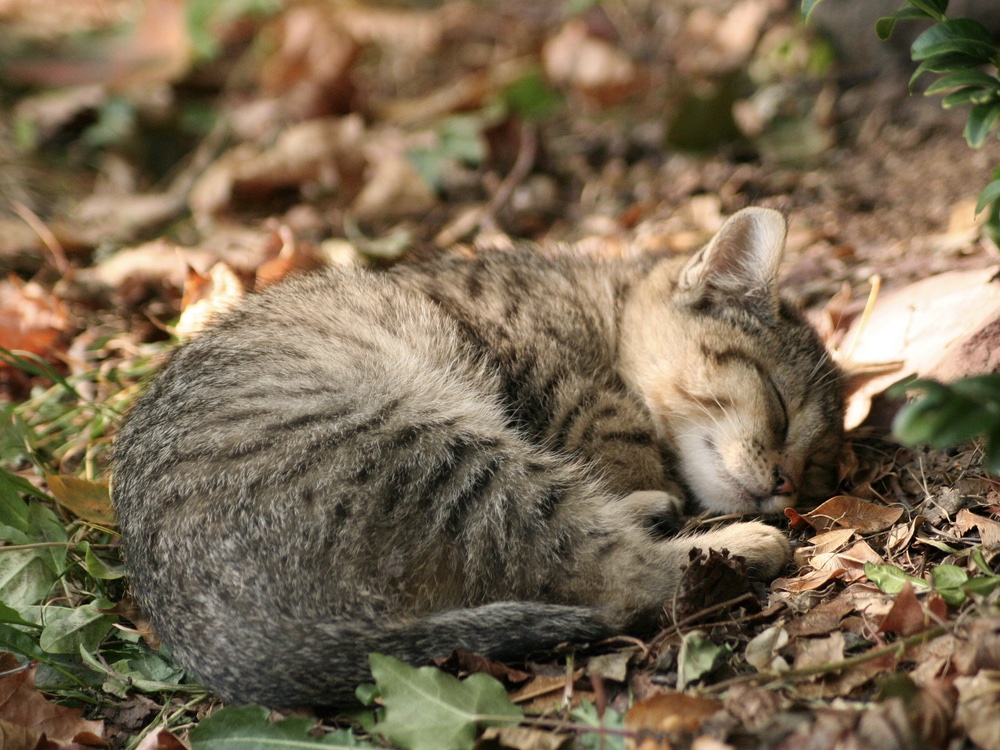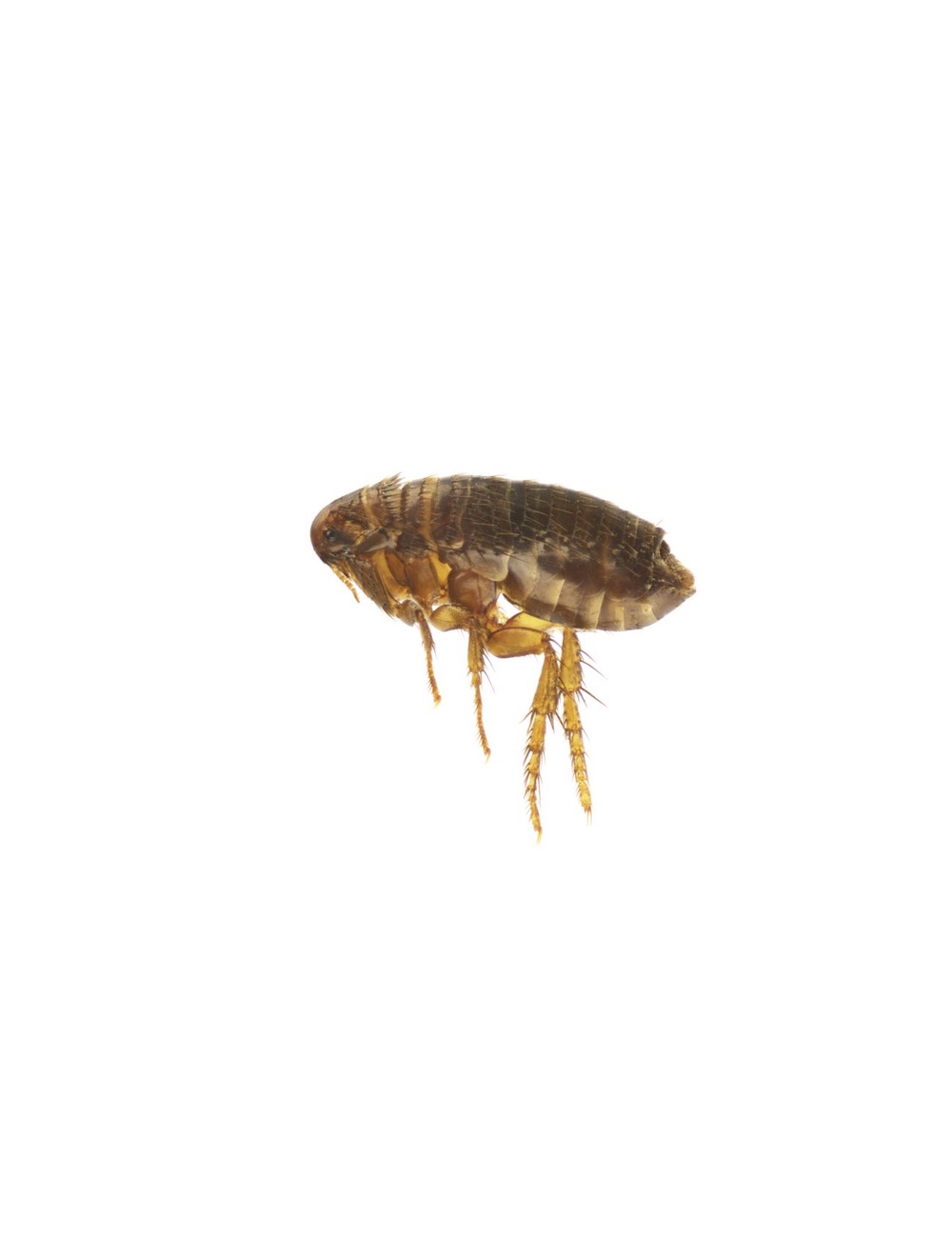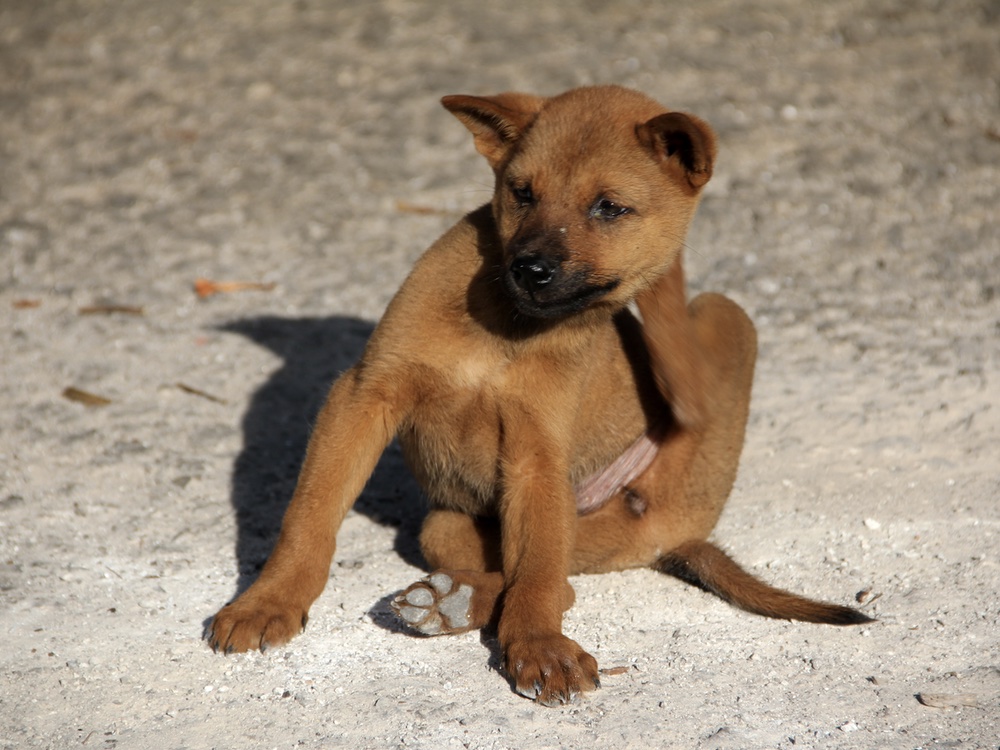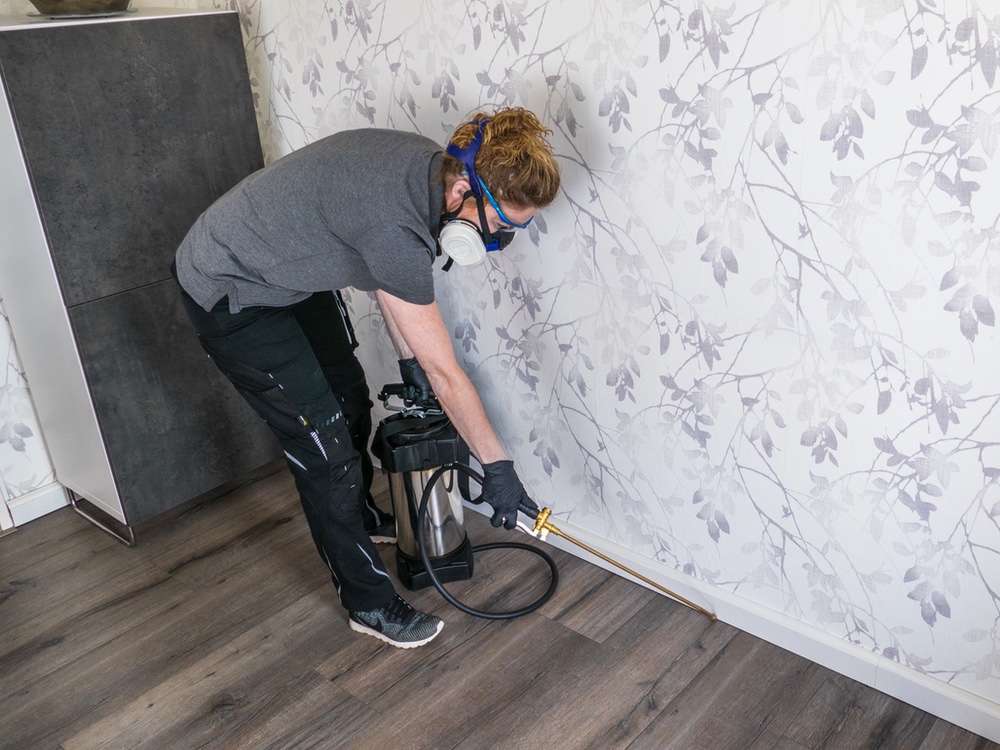If you have a dog or a cat as a pet, you probably already know a thing or two about fleas. There are different types of fleas, for example, the dog flea and the cat flea (the most common in the home) Although the name cat flea suggests otherwise, it also occurs in dogs. Also, the dog flea also occurs in cats. Fleas can cause itching, redness, infections and allergies in your pet. Because pets (especially cats) are very sensitive to almost all pesticides, it is important to call in a professional like Protect Pest Control when you have an infestation. We know how to perform the control safely for you and your pets.
In an occasional case, you do not have pets, but you are faced with fleas after a move, for example, as a result of an undisputed infestation by the previous owner. In that case, too, you can call in Protect Pest Control and we will come up with a suitable solution so that you can quickly get rid of the problem.

The flea feeds on the blood of dogs or cats, and even in humans, this animal can sometimes make a test bite. A flea can survive both on its host (namely the dog or cat), but also in or near your pet’s sleeping place. Having fleas is often very unpleasant for your pet and yourself because it causes itching and discomfort. The itching is due to a reaction of the body to the flea bite, but usually the bite itself does not really hurt. Still, you can get a flea bite as a human and it is recognizable as a red spot with a blood-colored dot or bump in the middle. Fleas prefer feet or lower legs,
More annoying is when you have a little one in the house who crawls on the floor, for example. Small children are therefore more likely to be bitten all over the rest of their bodies. They are also often more sensitive to the bites. Protect Pest Control therefore advises you to contact us immediately if fleas have been noticed around your small children to prevent this kind of situation.

The dog flea is found on both dogs and cats and can be a carrier of the canine tapeworm virus. This can be transmitted to humans, making this variety a health risk in the home. The dog flea is brownish-black in color and will turn red as it has filled with blood. This flea is about 1 to 4 mm long and can jump 15 cm, allowing them to travel from host to host.
The cat flea is most common and is laterally flattened, pale yellow to black, wingless and has very well-developed jumping legs. The difference between the dog flea and the cat flea is the length of the first cheek tooth crest. In a dog flea, the first cheek tooth comb is about half the size of the second, but in the cat flea, the first tooth of the cheek tooth comb is slightly shorter than the second. Cat flea larvae live on dead insects and feces of the adult fleas. The eggs of a flea are usually laid on the ground, rather than on the host. Therefore, you can (and are advised to!) comb your pet well, but in addition, there are often still numerous eggs on the ground. Only when the cocoon receives a mechanical stimulus, such as a vibration, does the flea awaken and emerge from the cocoon. Until this happens, an egg can remain dormant for a long time (up to 1 year!) and thus not hatch. As a result, after a period of dormancy, you may again experience a flea infestation because it has not yet been completely controlled.
Cat fleas can act as intermediate hosts for the canine tapeworm, so your dog may eventually suffer from it via the cat as well. It is therefore extra important to regularly check your pets for fleas and vacuum daily, especially just before the vacations.
A bird flea does not live exclusively on birds, but also in nests of birds that nest on or around houses. When the young birds leave their nests, bird fleas often invade homes and this can cause a nuisance. Also, some bird fleas are transmitters of diseases. Bird fleas are laterally flattened, light brown to black, have no wings and distinct jumping legs. It is important to check birdhouses against the facade and remove old nests after the young fledge.

Does your pet have fleas on its fur? Especially check your dog’s abdomen and your cat’s neck, as fleas like to sit here. You can also sometimes find black pepper-like spores. These are the fleas’ droppings. By shaking out the flea comb on white kitchen roll or paper, you can often get a better look at this.
Often these types of spores are also located in and around your pet’s sleeping area, and Protect Pest Control recommends that you take an extra look here.

Fleas are brought inside by your pet and then find seams and cracks in the house to lay eggs. Loose baseboards, floors with holes or spaces are all good places for eggs to lie until they are activated by a vibration. Fleas always try to establish themselves in areas of the home that are not walked on.
Often people try to deal with a flea infestation themselves and unfortunately overlook places with eggs. Fleas also sometimes lay eggs on the host, which then fall out of the coat and become hidden somewhere. Because these eggs are very difficult to see, flea infestations can persist for a very long time and sometimes seem impossible to control. Protect Pest Control can control the infestation in one go and ensure that all fleas and flea eggs are taken away, so you don’t get caught up in a lengthy control process. In every situation, we provide an appropriate customized solution.
Contact us now to schedule an on-site appointment or for advice and more information.
Protect Pest Control is a professional pest control company and uses safe and successful ways to control flea infestation. We mostly use a pressurized spray and perform a crevice treatment in the non-walking areas. The pesticides we use have an after-effect, so any fleas that come into contact with the pesticides afterwards are also controlled. Of course, we use the safest methods of control, for you and your family as well as your pets.
Protect Pest Control offers you a suitable customized solution after telephone contact and or an appointment on site, at your convenience. We have years of experience as a pest control company and are certified. In addition, we use an environmentally conscious manner of control. Protect Pest Control will discuss with you the number of treatments required to achieve the desired result and will also give you advice on prevention after the control.
Do you have certain questions or want to know more about our bed bug removal and control services? If so, contact us quickly. By making an appointment today, you can be sure that you will be rid of all bed bugs in no time.
